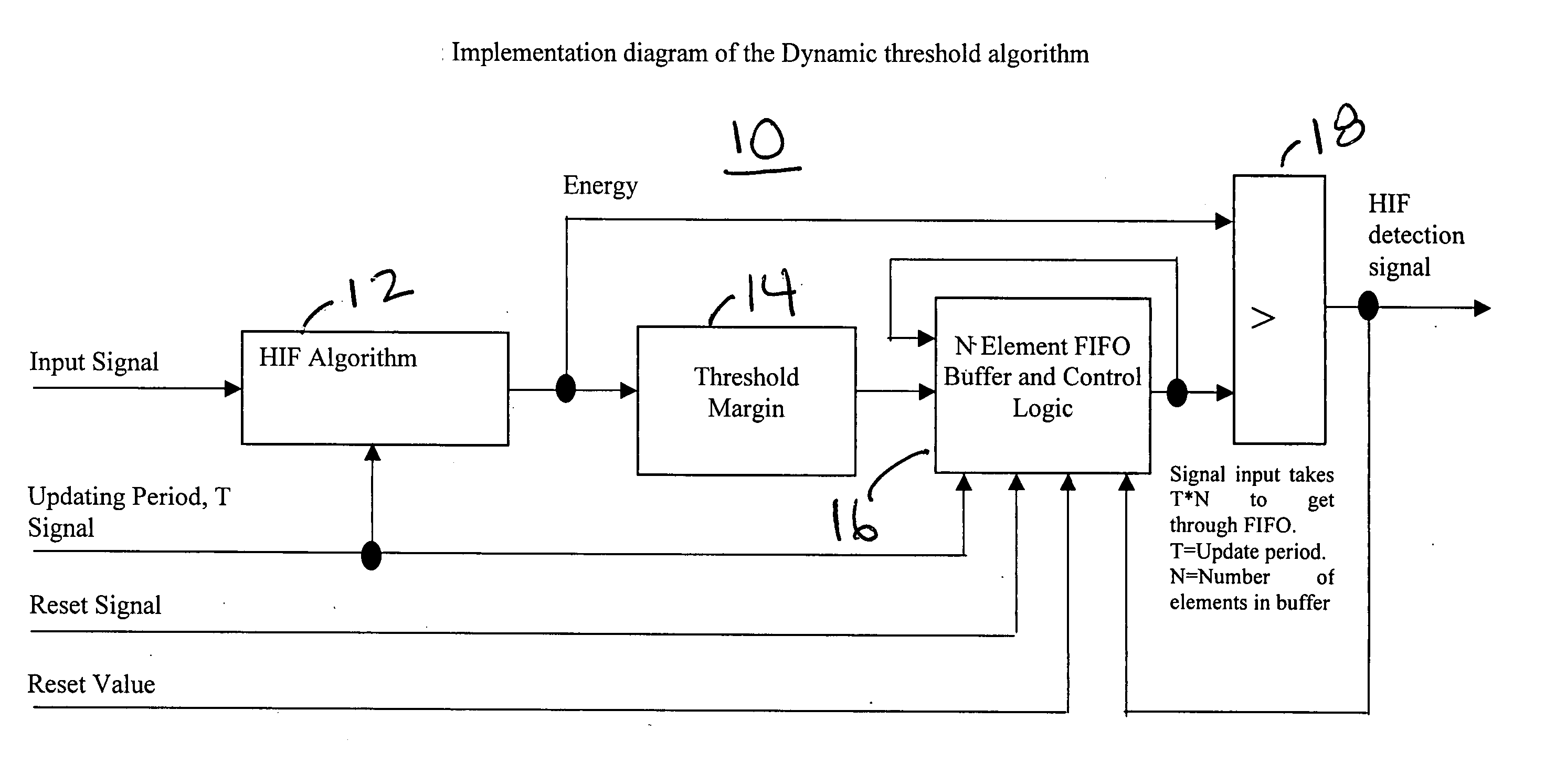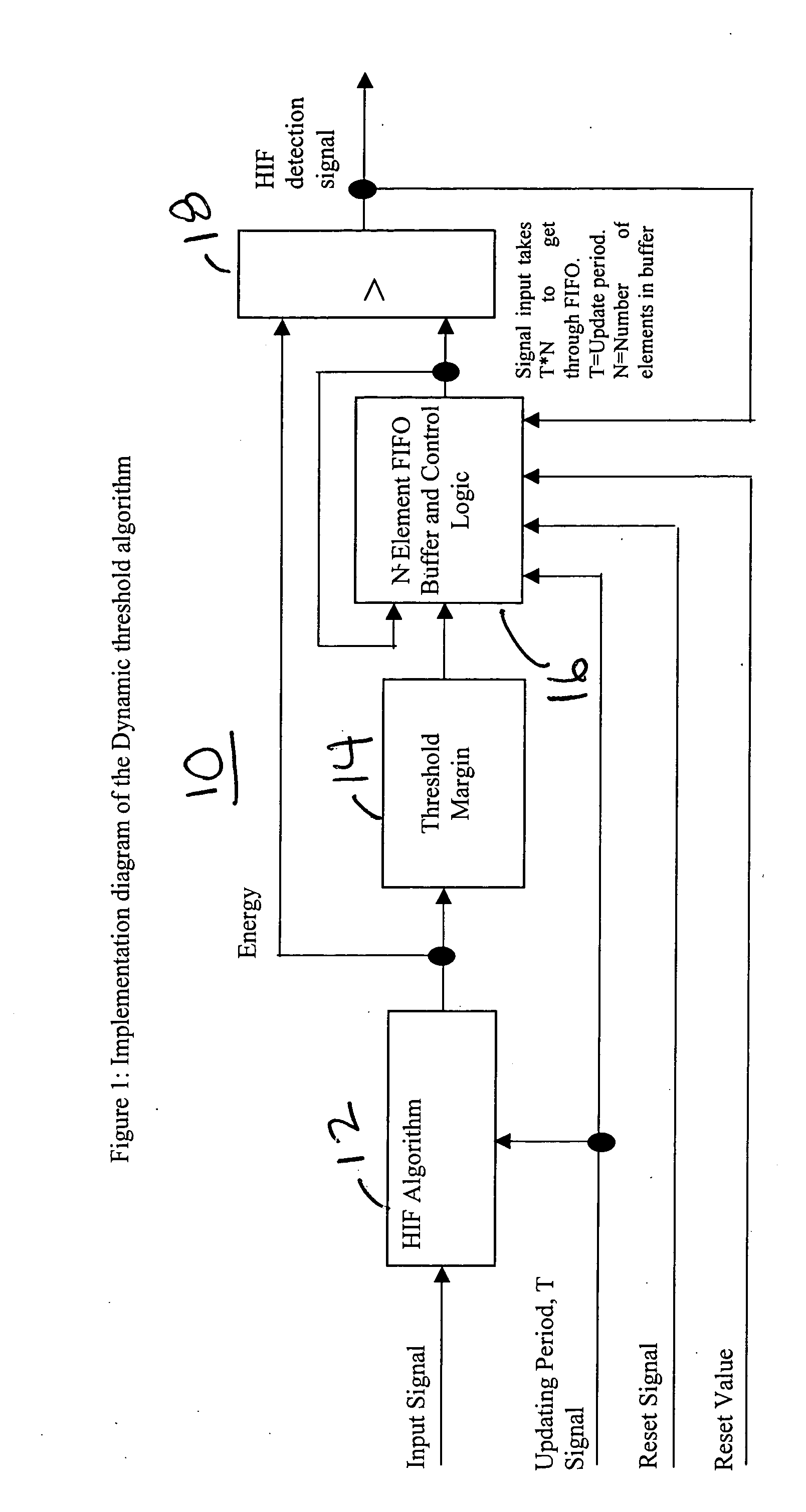Dynamic energy threshold calculation for high impedance fault detection
a high impedance fault and energy threshold technology, applied in short-circuit testing, emergency protective circuit arrangements, instruments, etc., can solve problems such as the risk of public contact with energized lines, the conductor is downed, and the element exposure of overhead conductors to the elements
- Summary
- Abstract
- Description
- Claims
- Application Information
AI Technical Summary
Benefits of technology
Problems solved by technology
Method used
Image
Examples
Embodiment Construction
[0020] Referring now to FIG. 1, which is the only drawing figure, there is shown a block diagram for the dynamic energy threshold HIF detection technique 10 of the present invention. The input signal, comprising phase (load) currents and / or neutral (residual) current, is input to the HIF detection algorithm 12 for processing. The HIF detection algorithm 12 may be one of the three algorithms described in the '270 application. The output of the HIF algorithm 12 is the energy of the input signal. This input signal energy is then multiplied by a factor, called Threshold Margin 14, that can be set to anywhere from about 110% to about 300% depending on the security of detection required and the result of that multiplication, known as Threshold Energy, is stored into a First-In First-Out (FIFO) buffer and control logic 16. Trials with captured field data indicate that there may be an unacceptable number of false detections when using a Threshold Margin lower than 125%. In general, the user...
PUM
 Login to View More
Login to View More Abstract
Description
Claims
Application Information
 Login to View More
Login to View More - R&D
- Intellectual Property
- Life Sciences
- Materials
- Tech Scout
- Unparalleled Data Quality
- Higher Quality Content
- 60% Fewer Hallucinations
Browse by: Latest US Patents, China's latest patents, Technical Efficacy Thesaurus, Application Domain, Technology Topic, Popular Technical Reports.
© 2025 PatSnap. All rights reserved.Legal|Privacy policy|Modern Slavery Act Transparency Statement|Sitemap|About US| Contact US: help@patsnap.com


